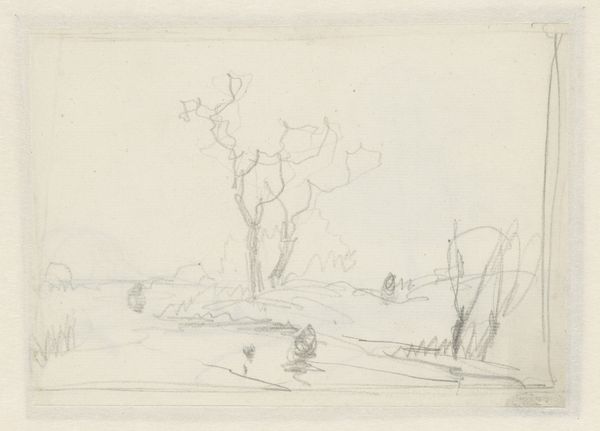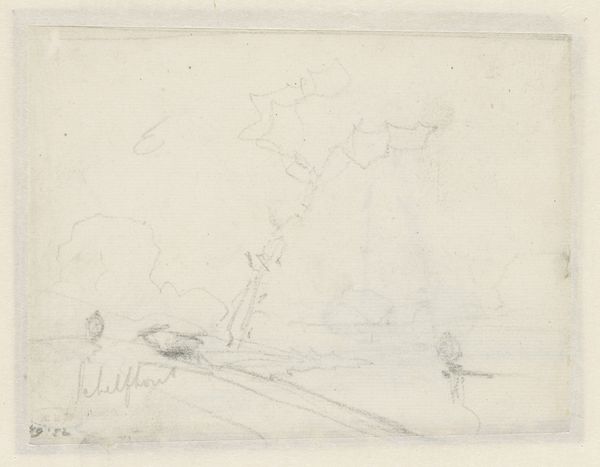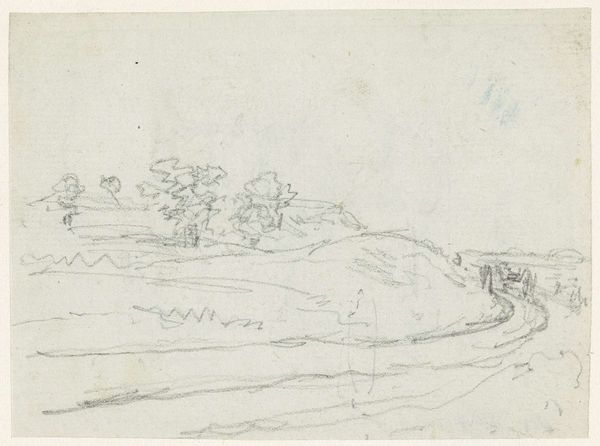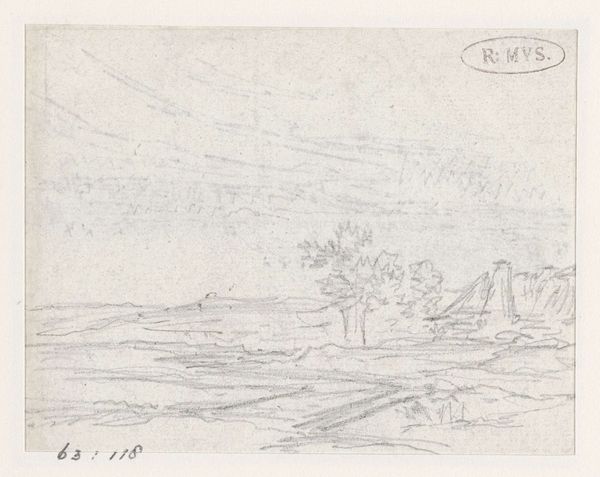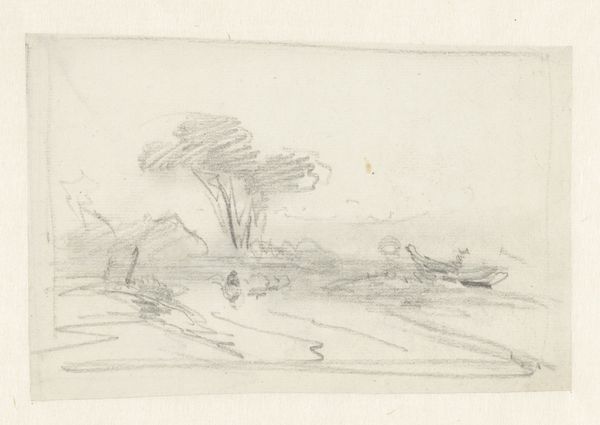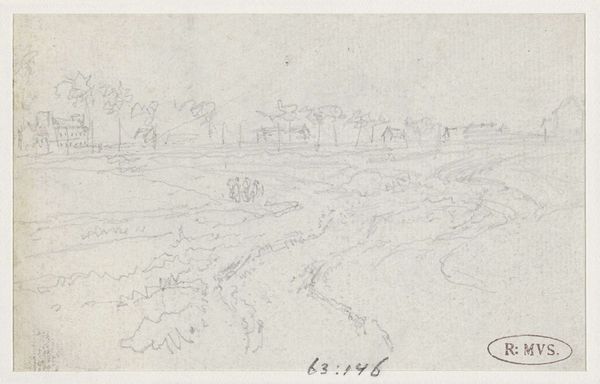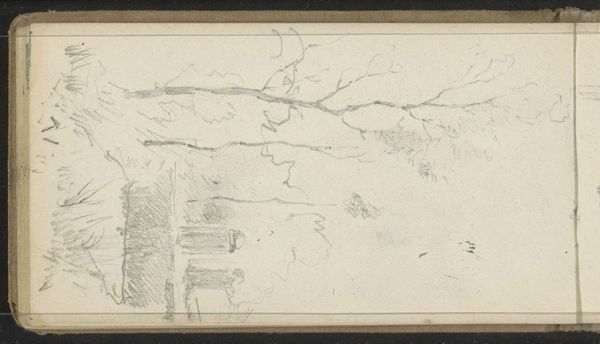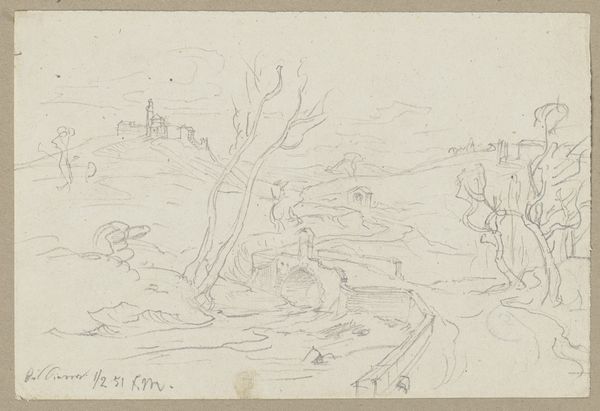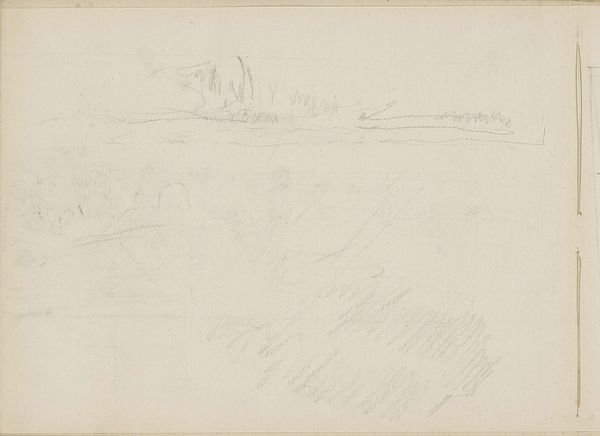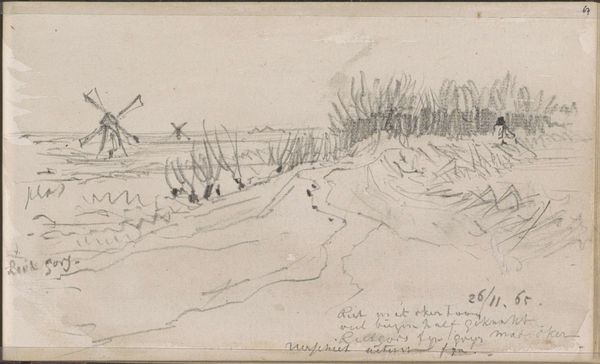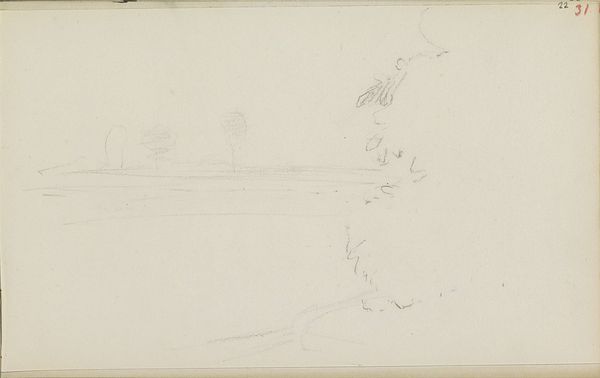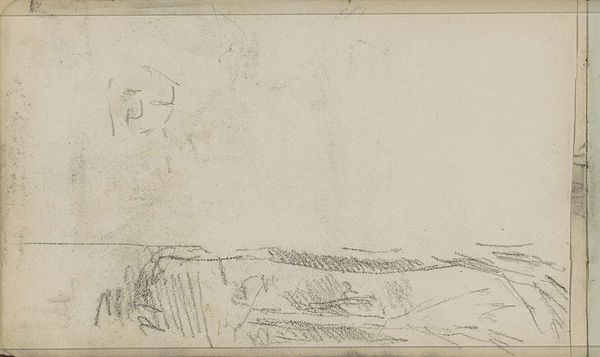
drawing, pencil
#
drawing
#
quirky sketch
#
landscape
#
personal sketchbook
#
idea generation sketch
#
sketchwork
#
ink drawing experimentation
#
romanticism
#
pen-ink sketch
#
pencil
#
line
#
sketchbook drawing
#
storyboard and sketchbook work
#
sketchbook art
#
initial sketch
Dimensions: height 82 mm, width 102 mm
Copyright: Rijks Museum: Open Domain
Editor: This is "Krabbel van twee molens (Montmartre)" by Georges Michel, created sometime between 1773 and 1843. It's a drawing, pencil and ink I think. It has the feeling of a quick sketch, very simple, almost childlike. What do you see in this piece? Curator: I see the winds of change sweeping across Montmartre, literally and figuratively. This isn't just a landscape; it's a whisper of the social and economic transformations occurring in late 18th and early 19th century France. Michel captures a rural scene, but those windmills… They're a symbol of labor, of a changing economy, and the exploitation inherent in industrial progress. What kind of dialogue can we build between then and now, about our current reliance on technology and the environmental cost we pay for progress? Editor: Exploitation of labor? I see what you mean, but wouldn’t that be a later view of windmills as representing industrialization? This looks almost romantic. Curator: Exactly. The Romantic period looked to the past – and nature - to critique contemporary industrial life. But is it innocent nostalgia, or a coded critique? Consider the politics of landscape – who had access to this land, and who benefitted from its resources? Michel’s seemingly simple sketch opens up avenues to discuss land ownership, social justice, and the hidden narratives within landscape art. It’s asking, subtly, for whom does the wheel turn? Editor: So it’s not just a pretty picture; it's asking deeper questions. I’m realizing that there’s so much context that impacts our perception of art. Curator: Precisely! Art is never created in a vacuum. When we approach it through a lens of historical and social awareness, we start to unpack its profound connection to human experience and that of course enhances our present experiences, too.
Comments
No comments
Be the first to comment and join the conversation on the ultimate creative platform.
